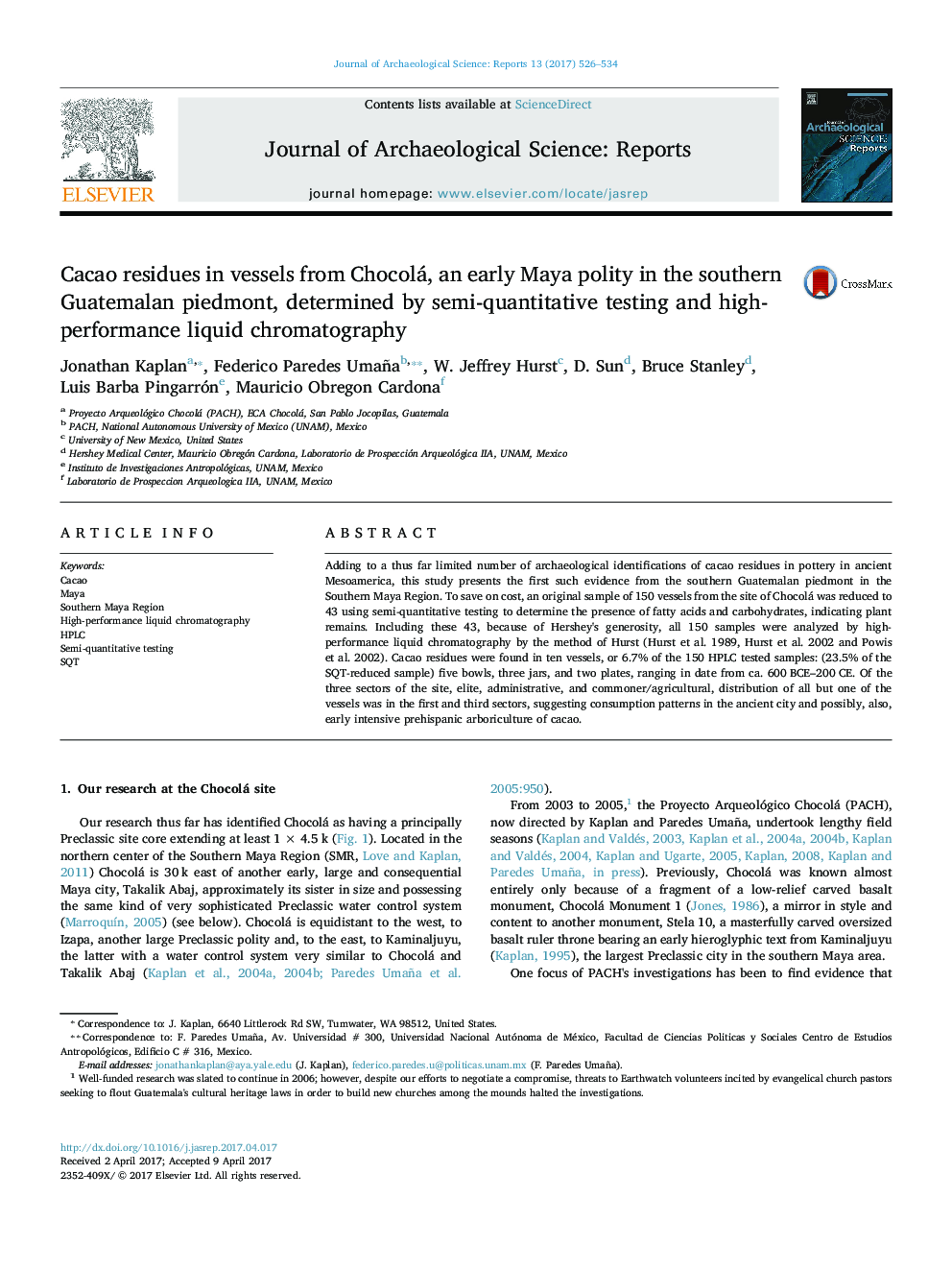| Article ID | Journal | Published Year | Pages | File Type |
|---|---|---|---|---|
| 5112435 | Journal of Archaeological Science: Reports | 2017 | 9 Pages |
Abstract
Adding to a thus far limited number of archaeological identifications of cacao residues in pottery in ancient Mesoamerica, this study presents the first such evidence from the southern Guatemalan piedmont in the Southern Maya Region. To save on cost, an original sample of 150 vessels from the site of Chocolá was reduced to 43 using semi-quantitative testing to determine the presence of fatty acids and carbohydrates, indicating plant remains. Including these 43, because of Hershey's generosity, all 150 samples were analyzed by high-performance liquid chromatography by the method of Hurst. Cacao residues were found in ten vessels, or 6.7% of the 150 HPLC tested samples: (23.5% of the SQT-reduced sample) five bowls, three jars, and two plates, ranging in date from ca. 600Â BCE-200Â CE. Of the three sectors of the site, elite, administrative, and commoner/agricultural, distribution of all but one of the vessels was in the first and third sectors, suggesting consumption patterns in the ancient city and possibly, also, early intensive prehispanic arboriculture of cacao.
Related Topics
Social Sciences and Humanities
Arts and Humanities
History
Authors
Jonathan Kaplan, Federico Paredes Umaña, W. Jeffrey Hurst, D. Sun, Bruce Stanley, Luis Barba Pingarrón, Mauricio Obregon Cardona,
